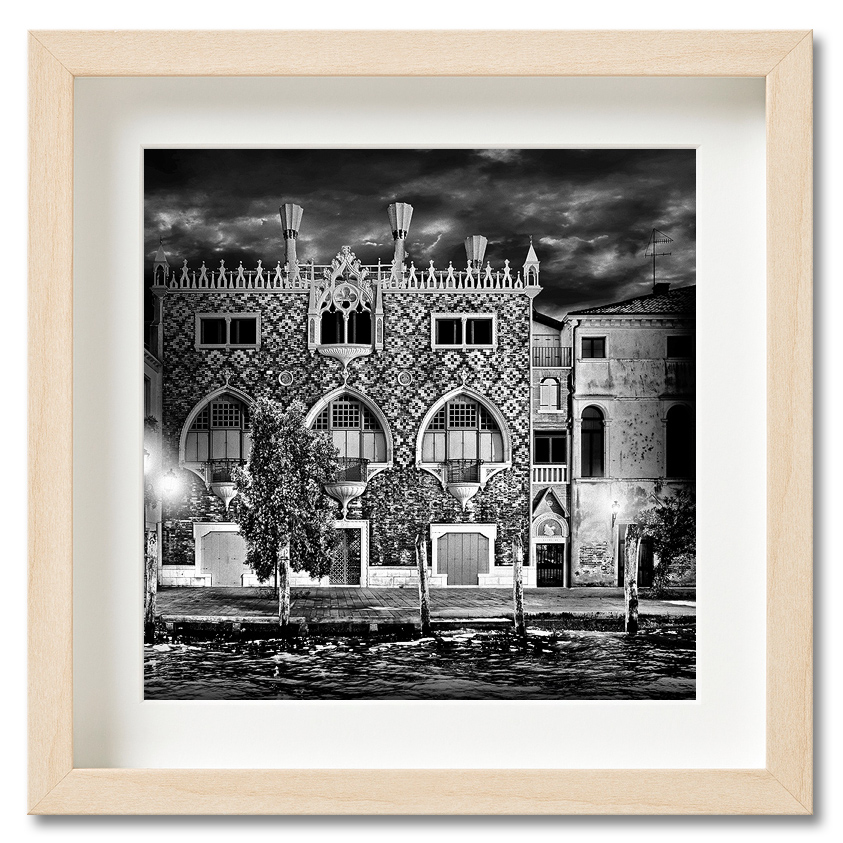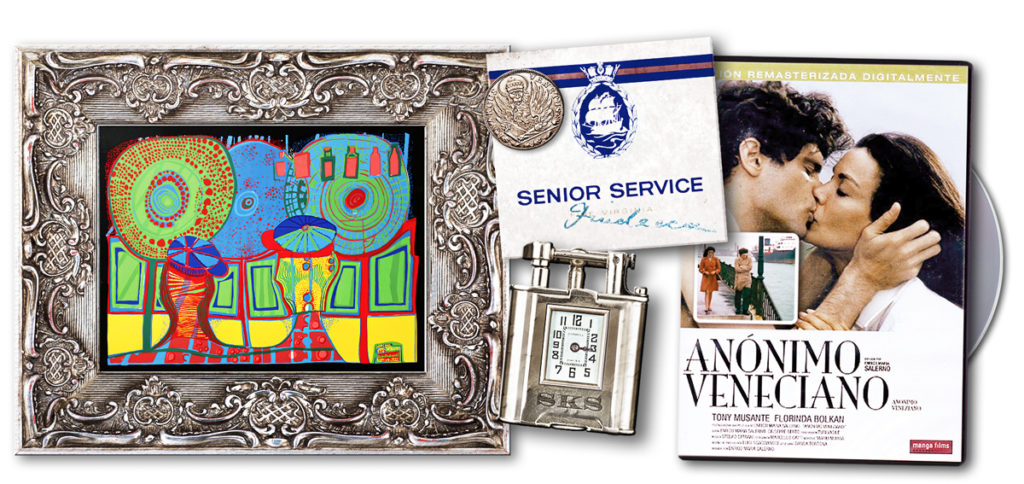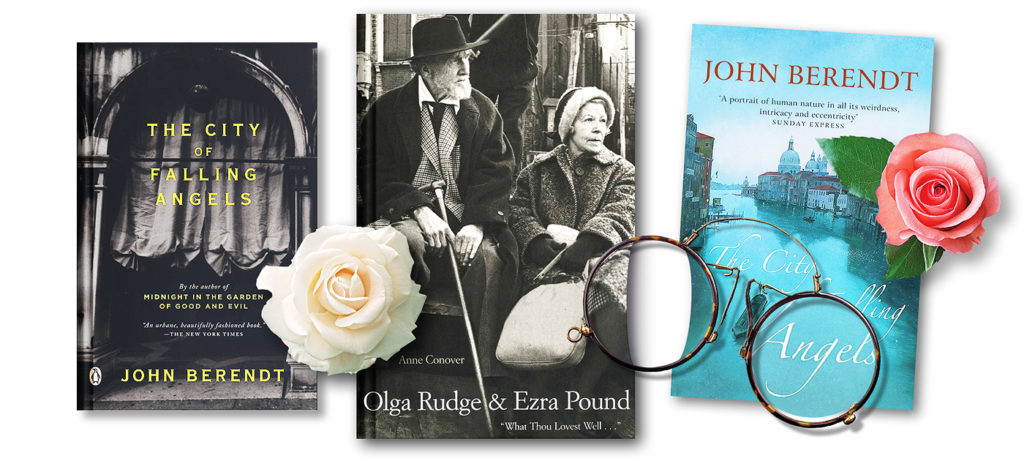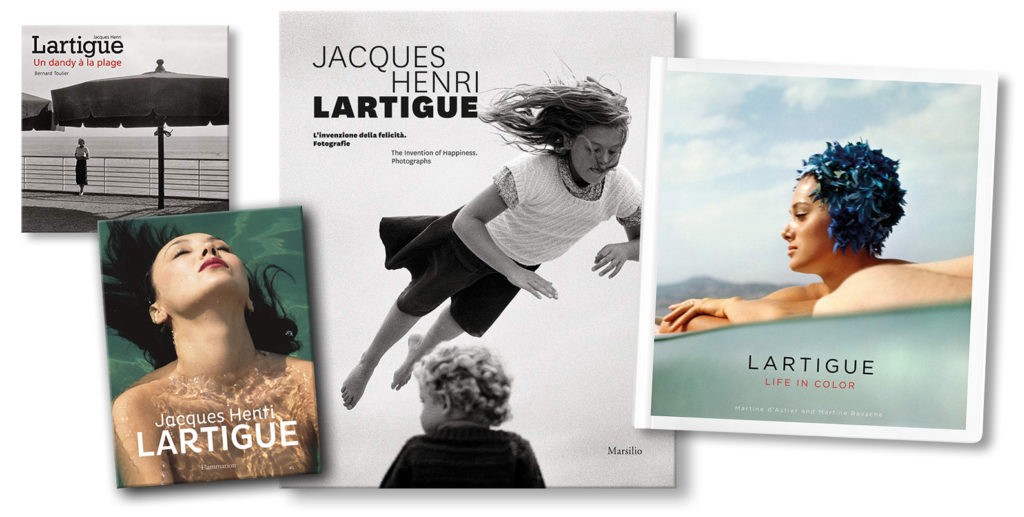
Die Nacht naht. Noch schneiden Gondeln glitzernde Striemen ins Meer. Schiffsschrauben der Vaporetti peitschen die Flut, verbiegen Wellenspitzen zu Tränentälern, schäumen die Spiegelung verfallender Palazzi in abstrahierte Unkenntlichkeit. Zuckende Abendsonnenstrahlen ertrinken im Canale della Giudecca. Im Zentrum der Lagune auf unruhiger Wasserfläche ein taumelndes Schiffchen aus Zeitungspapier. Ein schwimmender Hut, dessen Feder einem Segel gleicht. Ein verlorenes Kinderspielzeug auf großer Fahrt ins Unendliche. Oder eine Möwe, die wippend in einem Schaukelstuhl auf San Giorgio Maggiore zutreibt. Anlegemanöver. Wie die rostigen Angeln einer Kirchentür knarrt das Tau beim Festmachen. Der Dieselantrieb lässt das Holz des Bootsbodens erzittern. Es tönt nach gefährlichem Hundeknurren. Im Wellengewirr des anklatschenden Wassers vereinzelt Engelsgesang, vibrierende Markuslöwenlieder eines imaginären, übersinnlichen Chores.
Der Schritt vom Boot auf das Plateau des schwimmenden Anlegehäuschens ist kurz. Ein schneller Weg von schaukelnden Plattformen auf festen Grund – auf die behauenen Felsblöcke der von Holzpfeilern getragenen Fondamenta. The Stones of Venice … Vorbei an Casa Frollo und Casa dei Tre Oci, in der gerade der französische Photograph, Maler und Schriftsteller Jacques Henri Lartigue präsentiert wird.*** Auf beiden Seiten des Eingangs killen die Werbebanner der Ausstellung wie Segel im Wind. Nur ein paar Schritte weiter, Richtung Andrea Palladios Santa Maria delle Presentazione, ist die Bar Zitelle geöffnet. Mit einem Glas Vecchia Romagna und einer filterlosen Senior Service stehe ich jeden Abend am Kai und beobachte, wie sich am gegenüberliegenden Ufer die Kandelaber entzünden. Eine Bühnenbeleuchtung, die das San-Marco-Panorama mit goldenem Glasstaub aus Murano zu bedecken scheint. Irgendwann hat Harold Brodkey (Aaron Roy Weintraub) die Illumination Venedigs treffend phrasiert: Das Licht fährt zwischen und über die Gebäude, es kitzelt die Wasserflächen.

Nach Mitternacht: der Weg nach Hause. Meine forschen, geradezu in den steinernen Untergrund gemeißelten Schritte synkopieren den ins Gedächtnis gebrannten Text: The Cantos. Ezra Pound: Will I ever see the Giudecca again? – or the lights against it … Olga Rudge – mit dem Dichter für immer Seite an Seite auf der Insel San Michele – spielt für ihn auf imaginären Bühnen Sujet pour violin. Both lives pierced by arrows – Beider Leben von Pfeilen durchbohrt. Both lives united for eternity only after death – Beide Leben erst nach dem Hinscheiden geeint. Und das Danteske Chaos davor? Es ist in John Berendts Werk Die Stadt der fallenden Engel nachzulesen … (The book tells the story of some exceptional inhabitants of Venice, whom the author met while living there in the months following a fire which destroyed the historic La Fenice opera house in 1996.)

*** Jacques Henri Lartigue – L’invenzione della felicità,
curata da Marion Perceval e Charles-Antoine Revol, rispettivamente direttrice e project manager della Donation Jacques Henri Lartigue, e da Denis Curti, direttore artistico della Casa dei Tre Oci, è organizzata da Civita Tre Venezie e promossa da Fondazione di Venezia, in stretta collaborazione con la Donation Jacques Henri Lartigue di Parigi, con il patrocinio del Ministero della Cultura francese. 11.07.2020 – 10.01.2021, venerdì-domenica, 11-19)
*** Jacques Henri Lartigue – The Invention of happiness,
curated by Marion Perceval and Charles-Antoine Revol, respectively director and project manager of Donation Jacques Henri Lartigue, and Denis Curti, artistic director of the Casa dei Tre Oci, is organised by Civita Tre Venezie and promoted by Fondazione di Venezia, in close collaboration with Donation Jacques Henri Lartigue in Paris, under the patronage of the French Ministry of Culture. July 11, 2020 – January 10, 2021, Friday – Sunday, 11am -7pm)

